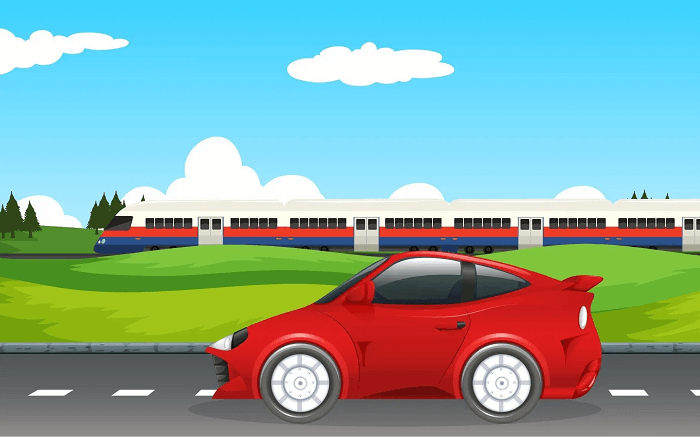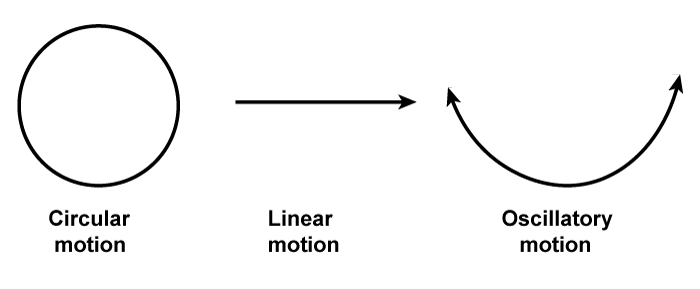Motion DefinitionYou all use everyday objects that are in motion. For example, if you look about you and see the air moving, or if you have clocks with hands that move, you know that day and night are caused by the motion of the Earth around the Sun. So, we will carefully examine what exactly is meant by the term motion. 
DefinitionMotion is defined as the change in the position of an object with respect to time and reference point. The six variables define motion, i.e., displacement, velocity, distance, acceleration, time, and speed. Motion includes things like a book sliding off a table, a person walking in a park, rattling windows, etc. There is motion in everything, including the air we breathe! The entire universe is in motion. Every physical process that takes place in the universe involves some motion. Motion might be quick or slow, but motion still remains present. Example- If we compare a pole to a car, the pole will be stationary since the car can move, but the pole cannot. So, to determine whether a car is in motion or at rest, we must consider how it moves in relation to a pole or any other still object. You might also refer to this stationary item as a reference point. Rest and MotionAn object is considered to be at rest if it is stationary or not changing position in relation to its surroundings. On the other hand, an object is deemed to be in motion if it is moving and altering its position in relation to its surroundings. For example- A person sitting on a stopped train might appear to be at rest in relation to the train, while an observer outside the train sees both the person & the train moving. Types of Motion
We may have seen that various items move in different ways. Some things travel on a curved path, whereas others move straight. Motion can be divided into three categories depending on its types, as follows:
Linear Motion- An object moves in linear motion when it travels in a straight path at a constant speed/velocity. This is also known as rectilinear motion. An object goes in a straight line from one place to another when it is in linear motion, and it does not change its orientation or direction. It is a basic motion that may be seen in naturally occurring events and artificial objects. Examples-
Rotary Motion- The motion of an item around a fixed point or axis is referred to as rotary motion, additionally known as circular motion. The thing moves in a circular route around the axis when rotating. The object's speed and direction constantly change as it revolves around the axis. Example-
Oscillatory Motion- When an object goes back and forth frequently around a central point, it is said to be in oscillatory motion. The object in oscillatory motion alternates between two places, known as the maximum displacement or the equilibrium position. The object's motion is periodic, which means it repeats itself at regular intervals, which is a common characteristic of oscillatory motion. The time it takes for an object to complete one full cycle of motion?from its maximum displacement back to its equilibrium position and then back again?is known as the oscillation period. The quantity of oscillation cycles that an object completes in a specified amount of time is known as its frequency. Example-
Scalar and Vector Physical QuantityWe study a variety of physical quantities such as distance, velocity, and many more. These numbers are generally categorized as either scalar or vector based on whether they provide full information about magnitude and direction or partial information, such as value or direction.
Distance and DisplacementDistance- It is a scalar quantity since it has just magnitude and no direction. For example, if you walk 10 km from point A to B, you have traveled 10 km. The distance is the same whether you travel from point A to point B or vice versa. Characteristics of Distance
Displacement- Because of its magnitude and direction, it is a vector quantity. The definition of displacement is the change in the position of an object with respect to a specific direction. For example, if you walk 10 kilometers from point A to point B in a north direction, that is the displacement. Characteristics of Displacement
The ConclusionMotion is the movement of an object from one point to another. When studying motion, we consider ideas like the speed at which an object is moving, the direction in which it is moving, and the rate at which its speed changes. We can explain and measure the motion of objects by comprehending these ideas, and we can implement this knowledge to address issues in many different domains. For instance, we can use our understanding of motion to create quicker and more effective vehicles or to examine how athletes move when competing.
Next TopicMountain Definition
|
 For Videos Join Our Youtube Channel: Join Now
For Videos Join Our Youtube Channel: Join Now
Feedback
- Send your Feedback to [email protected]
Help Others, Please Share










